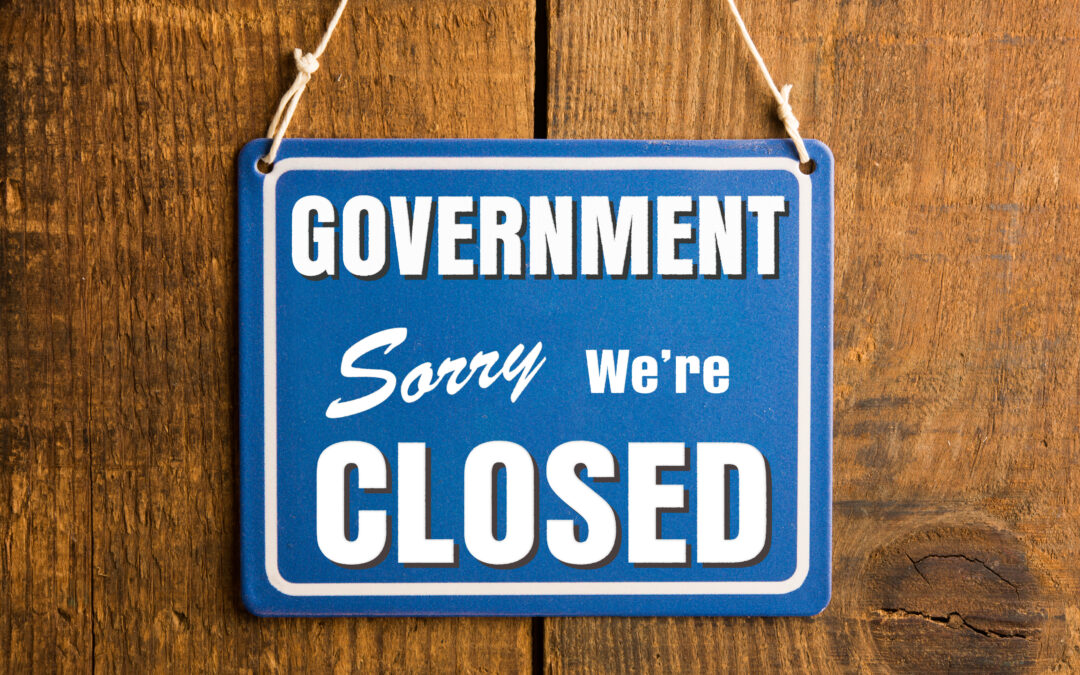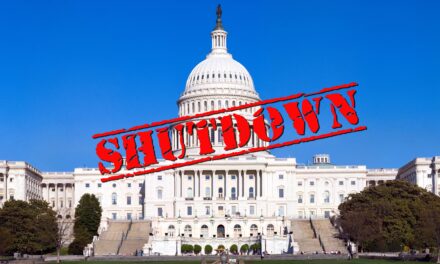During a federal government shutdown, all services deemed to be “non-essential” are put on hold — with park rangers furloughed, civilian contractors are temporarily sent home, and number-crunchers at the Bureau of Labor Statistics (BLS) told to take a break.
Since those BLS folks aren’t in the office, there’s no one around to total up jobless claims and process the official government data that drives expectations.
That means Wall Street is essentially “flying blind” in the absence of hard data. Likewise for the heads of the Federal Reserve, who are meeting up next week to discuss whether they should cute rates for October.
Fortunately, for Moneyball economists like us, the writing is already on the wall.
Hit today’s video below for the full story:
Video transcript:
This is Moneyball Economics, and I’m Andrew Zatlin…
The government shutdown has meant some really critical economic data points are not being released by the government. That means the Federal Reserve is flying blind and three weeks away from an interest rate cut decision, that’s not a good place to be.
So why aren’t the markets panicking?
Why are the markets actually going up? It’s because they expect another rate cut in October.
Why are they expecting it? Well, because the Fed has indicated they’re going to go beyond the government data and they’re going to look at some alternative data.
In other words, the Fed is saying we’re not exactly flying blind. And when they’ve indicated what data they’re going to be looking at, it seems to align with the expectations the market has about a jobs recession. So the market’s saying it looks like we can get a rate cut, however, a lot can happen in the next three weeks.
We can get the data released, we can get some additional data, and quite frankly, the markets could be wrong. That’s what we want to talk about, right, wrong, and what happens accordingly.
Right off the bat, what we don’t have is visibility to inflation and the labor markets. Inflation was supposed to come out this week. We don’t have it. However, the last record of inflation showed that inflation was not really getting hot because of tariffs. That’s a good thing, but it was still too high for the Federal Reserve to be compelled to cut interest rates.
In other words, interest rates were continuing to stay at the same level higher than what the Fed wants and certainly not enough to compel an interest rate cut. So that’s strike one for the markets in terms of getting their interest rate cut. Strike two is the economy. It looks like the third quarter of the economy is going to be above 3%, which would be very hot and again, would not compel the Fed to cut interest rates.
Economy’s doing fine. Inflation’s just a little bit high. Neither of those should lead to an interest rate cut.
So why is the market expecting one? Well, because of a potential jobs recession, September would have been a fifth month indicating what was going on in the labor market and everyone was expecting some weakness five months in a row of weak labor that is enough to trigger and force the Fed to do something.
Well, the Fed said we don’t have labor data. We don’t have the September payrolls, we don’t have last week’s jobless claims. We certainly don’t have this week’s jobless claims, but we are not exactly blind.
We do have one dataset that we can use called ADP. ADP is a company that handles a big chunk of the United States, payrolls about 25% plus or minus. So they’re basically the ticket takers at the stadium. They know how full or how vacant the stadium is or they’re supposed to.
This is where things get interesting.
Nobody really looks to ADP for their forecast about payrolls because quite frankly, they’ve never aligned with the official data.
Now everybody is saying, well, maybe ADP has been more right than wrong because maybe we shouldn’t be relying on the official data at all. Yeah, that’s right. And so a lot of attention’s now going to ADP and guess what? Last week ADP forecast, a crushing minus 33,000 payrolls for the month of September.
So take a step back. If you are the market, you certainly are thinking the economy’s doing fine.
Inflation’s still a little bit hot for the Fed, but overwhelming those two data points is the likelihood of a jobs recession. And if they’re going to rely on ADP data, that’s going to be reinforced with a contraction in jobs data five months in a row.
Basically no jobs created = time to get into the act, Fed.
I have different data that I look at, and what I’m seeing is in fact a slight inflection up and it’s actually supported by a lot of other data points.
For example, if you look at layoffs, they’re actually down substantially compared to last year. And this year, in fact, the bubble of layoffs that we experienced in the first few months of this year, it’s ended. And in fact, we’re actually seeing more hiring and less firing. That actually was the story coming into this week.
Jobless claims over the last few weeks have crashed. They’ve come down substantially, and there was really nothing indicated that they would go up. So we don’t have a lot of firing. We don’t have a lot of firing both in official reported layoffs. We don’t have a lot of firing in people saying, “Hey, I was fired.”
I need some benefits. What we don’t have though, is hiring. Well, guess what? The data I look at says in fact, hiring is starting to perk up. And quite frankly, why not? All that cost cutting, all that leaning up that took place in the first part of the year is paid off.
And while companies aren’t necessarily leaning in, they are looking out two months, we get to the end of the year, the new year budgets are opened, and it looks like we’re going to be seeing growth. It looks like we actually need to start thinking about hiring over the next couple of months.
We’re going to continue to get into this place where there isn’t a lot of layoffs and in fact, there’s a firming up. No hiring but no firing. And the way that plays out into the data is it’s going to look like things are improving.
I think in September, ADP was quite wrong.
If the data gets released between now and the next three weeks, if the September payroll data gets released and we don’t see this crushing number, the markets are going to freak out.
Right now, the markets are saying the Fed’s going to look at this minus 33 number, but what if it comes out at plus 50 or a hundred? In which case, again, the Fed’s going to say, interest rate cuts are on the table, but maybe not October, let’s get another month of data. The markets in that case will come down.
So my suggestion right now is things are bubbling up. Things are heating up because of interest rate cuts. But make sure you take a position out there that says, what if it doesn’t happen? And it’s not going to be an end of the month issue when the Fed meets.
It’s going to be sometime between now and when the government shutdown happens. That’s when you want to think about taking some money off the table by a put on the spy. Do whatever it is you like to do. We’re in it to win it.
Zatlin out.

Andrew Zatlin
Editor, Moneyball Economics





